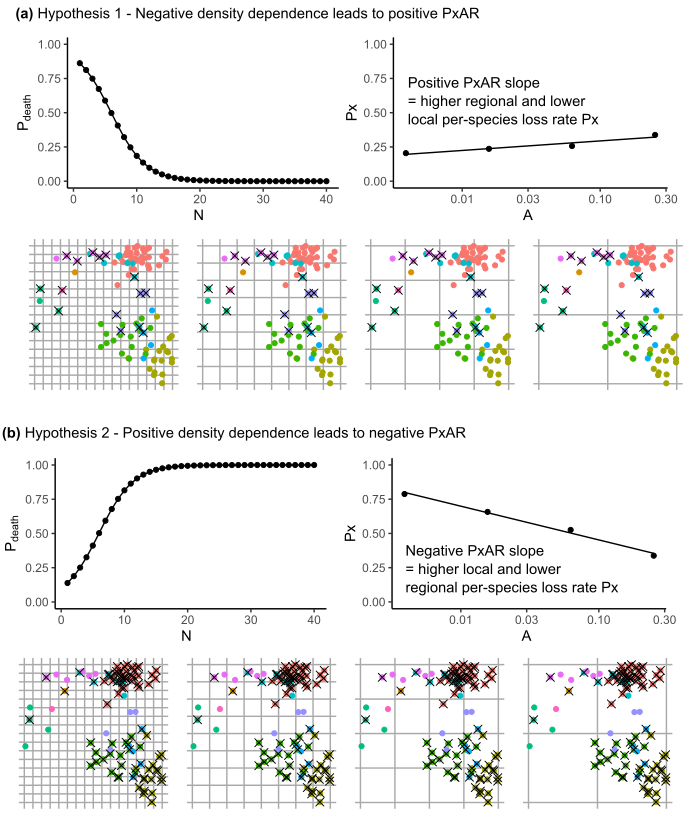Petr and Francois, together with Vojta Bartak (FZP CZU) and Adam T. Clark (from University of Graz) published a new theoretical paper in Ecology and Evolution.
During the ongoing transformation of biosphere, we have been witnessing a global loss of biodiversity, but locally, there are as many declines as there are increases of species diversity, with zero average change. This is the so called the biodiversity conservation paradox.
In this new paper we offer a mechanistic explanation of this paradox. Using simulations, we show that the key to understanding is density-dependent death rate. For instance, when per-capite death rate is higher in smaller populations (or in species with small geographic ranges), we observe high global, but low local extinction rates. It is a simple mechanism, but it has not yet been demonstrated.
We hope that a plausible mechanism will help us to better communicate that the global biodiversity change is likely a different beast locally and globally. At the same time, we also offer a single link between the local and global changes. This link is where conservation efforts should be aimed if we want to address the multi-scale biodiversity loss.
